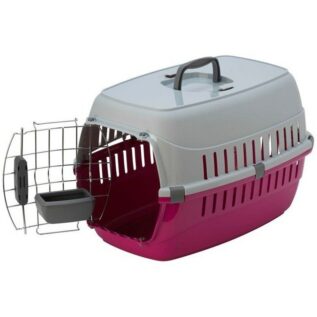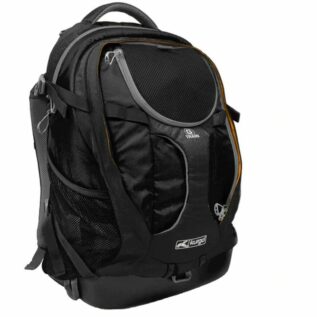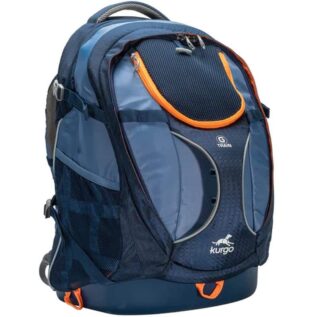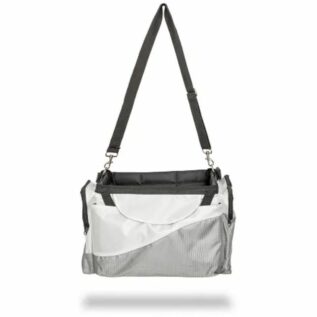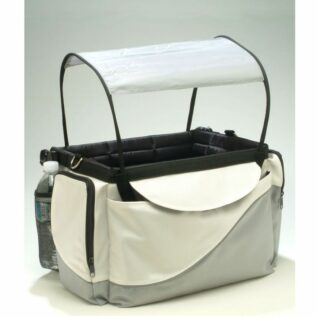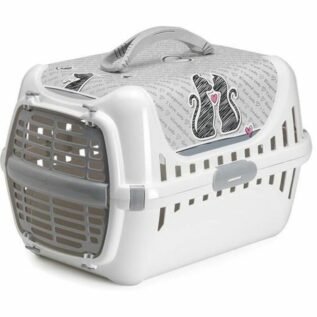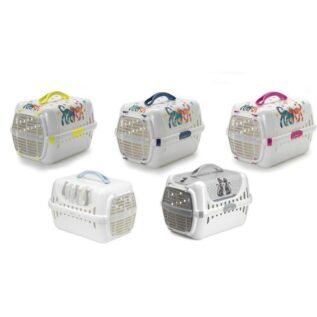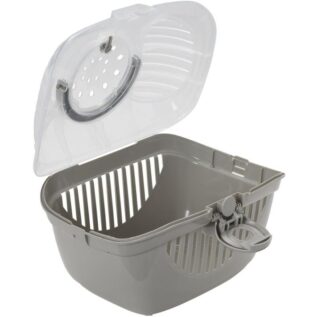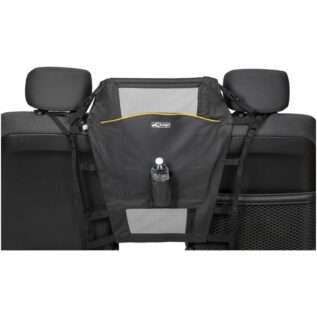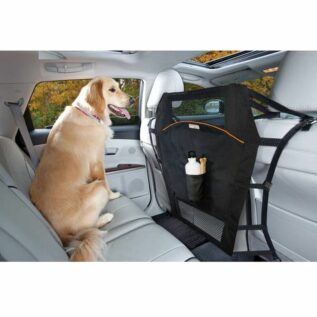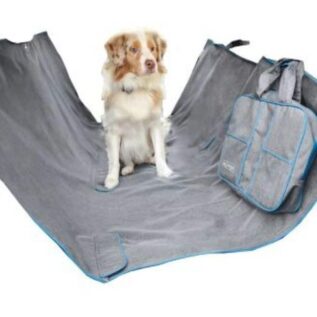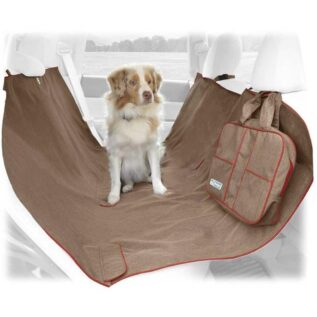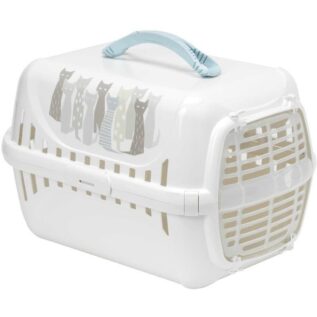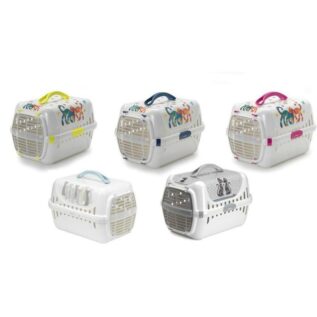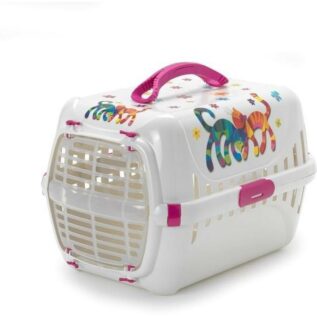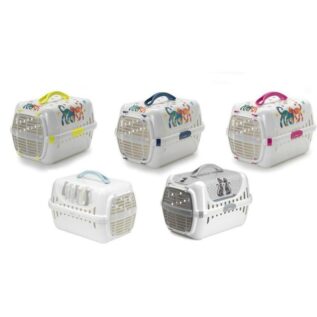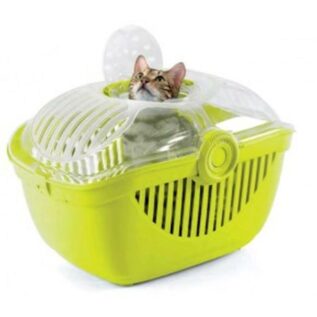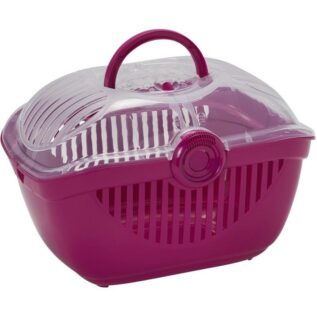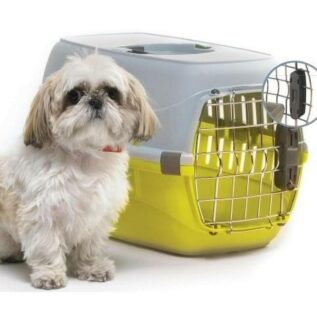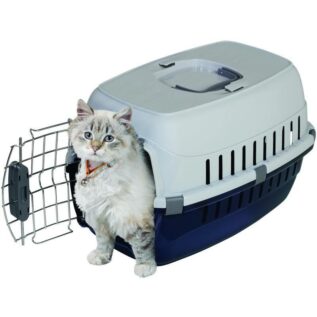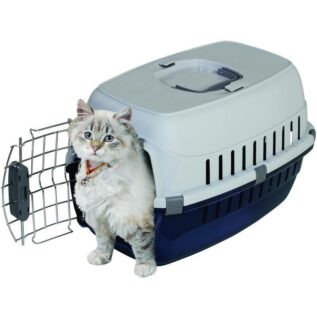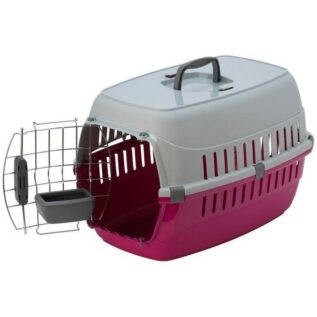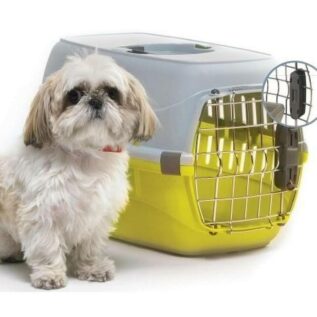A Comprehensive Guide to Choosing the Ideal Dog Carrier or Backpack for Your Furry Friend
Choosing the perfect dog carrier or backpack for your furry friend can be quite a task. With the wide variety of options available, it's easy to feel overwhelmed. But don't worry! This comprehensive guide will help you make an informed decision.
Why is it Important to Choose the Right Carrier for Your Dog?
Selecting the right carrier is crucial for your dog's comfort and safety. It also helps in Understanding Your Dog's Needs. Each dog has unique needs based on their size, breed, age, and health conditions. Considering these factors will ensure your pet stays happy and stress-free during travel.
Types of Dog Carriers and Backpacks
There are various types of carriers and backpacks available in the market. These include Traditional Carriers, Backpack Carriers, Sling Carriers, and Wheeled Carriers. Each type has its own set of pros and cons, and the best choice depends on your specific needs and circumstances.
Considerations When Choosing a Dog Carrier or Backpack
Choosing a dog carrier or backpack involves more than picking the first one you see. You need to consider a variety of factors to ensure it meets your dog's needs and provides them with a safe, comfortable environment.
Size and Weight
As mentioned earlier, your dog's size and weight are critical considerations. The carrier should be spacious enough for your dog to move around comfortably, but not too large that they could be jostled or hurt during transport. Always check the weight limit of the carrier to ensure it can safely accommodate your pet.
Comfort and Safety Features
Look for a carrier with soft, comfortable interior padding that will keep your pet cozy during travel. Safety features like secure zippers, clasps, and interior leash clips are also important to prevent escapes.
Material and Durability
The material of the carrier should be durable and able to withstand your dog's activity level. Nylon and polyester are common materials for carriers due to their strength and durability. If your dog is a chewer or scratcher, you might want to consider a hard-sided carrier for extra durability.
Ventilation
Good ventilation is crucial for your pet's comfort and safety, especially during long journeys or warm weather. Look for a carrier with plenty of mesh panels or ventilation holes to allow fresh air to circulate.
Ease of Cleaning
Accidents happen, especially during travel. A carrier with a removable, washable liner will make cleaning up messes much easier. Some carriers also feature water-resistant materials for added convenience.
Price
Finally, consider your budget. While it's essential to find a quality carrier, there's no need to break the bank. With careful consideration and research, you can find a well-made, comfortable carrier in your price range.
How to Measure Your Dog for a Carrier
Choosing a dog carrier that is the right size for your pet is essential for their comfort and safety. Here's how to accurately measure your dog to ensure a perfect fit.
Measuring Length
To measure the length of your dog, have them stand on all fours. Using a tape measure, measure from the tip of their nose to the base of their tail (not the tip of the tail, as tails can vary greatly in length). This measurement will give you the minimum length your dog carrier should be.
Measuring Height
Next, measure the height. Have your dog sit down (as some dogs are taller while sitting than standing). Measure from the floor to the top of their head or the tip of their ears if they stick up. This is the minimum height your dog carrier should be.
Measuring Width
For width, have your dog stand normally and measure across the widest part of their body, usually across the chest area or the hips. This will give you the minimum width your dog carrier should be.
Weight Considerations
In addition to the physical measurements, you also need to consider your dog's weight. Each dog carrier will have a weight limit, and it's important to ensure your dog is within that limit. A carrier that is not designed to handle your dog's weight can break or cause discomfort or injury to your dog.
Remember, a carrier should be large enough for your dog to stand, turn around, and lie down in a natural position. However, a carrier that is too large can also be unsafe, as your dog may be tossed around during transport.
Finding a dog carrier that is just the right size for your pet will keep them safe, secure, and comfortable during travel.
Introducing Your Dog to Their New Carrier
Introducing your dog to their new carrier isn't just about placing them inside it and hoping for the best. This process should be gradual, carefully planned, and filled with positive experiences for your furry friend.
Familiarization
Familiarization is the first step in making your dog comfortable with their new carrier. Start by placing the carrier in a space where your dog spends a lot of time, like the living room. Leave the door of the carrier open, allowing your dog to explore it at their own pace. You can even place some of their favorite toys or a familiar blanket inside the carrier to make it more inviting.
Conditioning
Conditioning involves creating positive associations with the carrier. Once your dog is comfortable being near the carrier, begin feeding them their meals near it, gradually moving the food bowl closer until they are eating inside the carrier. This process can take days or even weeks, depending on your dog's comfort level.
You can also use treats to make the carrier a positive place. Start by tossing a few tasty treats near the carrier, then inside it. Over time, your dog will associate the carrier with these positive experiences, reducing their fear or apprehension.
Positive Reinforcement
Positive reinforcement is key in helping your dog feel comfortable in their new carrier. Praise them and give them treats whenever they show interest in the carrier or willingly go inside it. This creates a positive association with the carrier and encourages your dog to continue using it.
Remember, patience is key when introducing your dog to a new carrier. Never force your dog into the carrier, as this can create negative associations and make them fearful. Instead, allow them to adjust at their own pace, ensuring the carrier becomes a safe, comfortable space for them.
Traveling with Your Dog
Traveling with your dog can be a fun and rewarding experience, but it does come with its set of challenges. Whether you're traveling by car, air, or public transit, it's essential to prepare and choose a dog carrier suitable for your chosen mode of transportation.
Car Travel
If you're planning on road tripping with your dog, you'll need a carrier that provides both comfort and safety. Look for a carrier that can be securely fastened to your car seat using the vehicle's seatbelt to prevent it from sliding or tipping over. A carrier with good ventilation is also essential to keep your dog cool, especially during long drives.
Air Travel
Air travel with dogs requires more planning and preparation. Airlines have specific requirements for dog carriers, so be sure to check these before purchasing. Generally, carriers for air travel should be well-ventilated, secure, and fit under the seat in front of you. Also, remember that each airline has its own rules about the maximum allowed weight for in-cabin pet travel, including the weight of the carrier, so keep this in mind when selecting a carrier.
Public Transit
If you're planning on using public transit, such as buses, trains, or subways, you'll need a compact and portable carrier. Many transit systems require that pets be kept in a carrier at all times. Backpack or sling carriers are often suitable for this type of travel as they are easy to carry and maneuver in crowded spaces.
In all cases, remember to get your dog accustomed to their carrier well before travel. This will make the journey less stressful for both you and your pet. And no matter how you're traveling, always ensure your dog has access to water and the opportunity for bathroom breaks.
How to Clean and Maintain Your Dog Carrier
Proper cleaning and maintenance are crucial in prolonging the lifespan of your dog carrier or backpack. Here's how to keep your carrier in tip-top shape:
Cleaning Tips
Read the manufacturer's instructions: Some materials may require special care or are not suitable for machine washing. Always follow the manufacturer's cleaning recommendations.
- Empty the carrier: Remove all toys, blankets, and padding before cleaning.
- Wipe down the interior and exterior: Use a damp cloth and mild soap to clean the inside and outside of the carrier. Avoid harsh chemicals that could harm your pet.
- Wash removable linings and padding: If the carrier has removable fabric liners or padding, wash them separately according to the manufacturer's instructions. Typically, a gentle cycle in the washing machine will do the trick.
- Dry thoroughly: After cleaning, leave the carrier open to air dry completely. This will prevent the growth of mold or mildew.
Maintenance Tips
- Regularly check for damage: Look for signs of wear and tear regularly, such as frayed seams or broken zippers. Address these issues promptly to avoid safety hazards.
- Keep it secure: When in use, make sure the carrier is always securely fastened to prevent unexpected openings.
- Store properly: When not in use, store your carrier in a clean, dry place. If it's collapsible, fold it down to prevent it from getting damaged.
By following these cleaning and maintenance tips, you can ensure your dog carrier remains clean, fresh, and ready for many journeys to come.
Common Mistakes to Avoid
Selecting the perfect dog carrier or backpack is not as straightforward as it might seem. Avoid these common mistakes to ensure the comfort and safety of your furry friend.
Choosing the Wrong Size
One of the most common mistakes is choosing a carrier that is too small or too large for your dog. A small carrier can be restrictive and uncomfortable, while a large one can cause your dog to slide around during travel. Always measure your dog correctly and check the size guidelines provided by the carrier manufacturer.
Ignoring Comfort Factors
Comfort should be a top priority when choosing a carrier. Some people might overlook elements like the quality of the interior padding, the presence of mesh windows for ventilation, and the adjustability of straps (for backpack carriers). These factors significantly contribute to your dog's comfort during travel.
Not Considering Your Dog's Personality
Every dog is unique, and their personality should factor into your decision. If your dog is anxious or likes to chew, a hard-sided carrier may be a better option. If your dog loves to stick their head out and observe, a carrier with ample mesh windows might be ideal.
Neglecting Ventilation
Adequate ventilation is crucial for your pet's comfort and safety. Neglecting to consider this can lead to an overheated and uncomfortable dog, especially during long journeys or in warm weather. Ensure the carrier you choose has sufficient ventilation panels or holes.
Overlooking the Carrier's Weight
Remember to consider the weight of the carrier itself. While it should be sturdy, it also needs to be light enough for you to carry when your dog is inside.
By being aware of these common pitfalls, you can make an informed decision and choose a carrier that will ensure a pleasant and safe journey for your furry friend.
Conclusion
Choosing the right dog carrier or backpack may seem like a daunting task, but with this guide, we hope to have made the process easier for you. Remember, the comfort and safety of your furry friend should always be your top priority.
Frequently Asked Questions
What type of carrier is best for long trips?
The best type of carrier for long trips depends on the mode of transportation and your dog's size and comfort. Generally, a well-ventilated and spacious carrier is ideal.
Are backpack carriers safe for dogs?
Yes, backpack carriers are safe for dogs as long as they are the right size, well-ventilated, and securely fastened.
What should I do if my dog doesn't like their new carrier?
Gradual introduction and positive reinforcement can help your dog adjust to their new carrier. Start by letting them explore the carrier with the door open and reward them for positive behavior.
How often should I clean my dog's carrier?
It's best to clean your dog's carrier after every use. For infrequent travelers, a monthly clean should suffice.
Can I take my dog's carrier on a plane?
Yes, many airlines allow a specific size of dog carrier as carry-on luggage. It's best to check with the airline beforehand.

